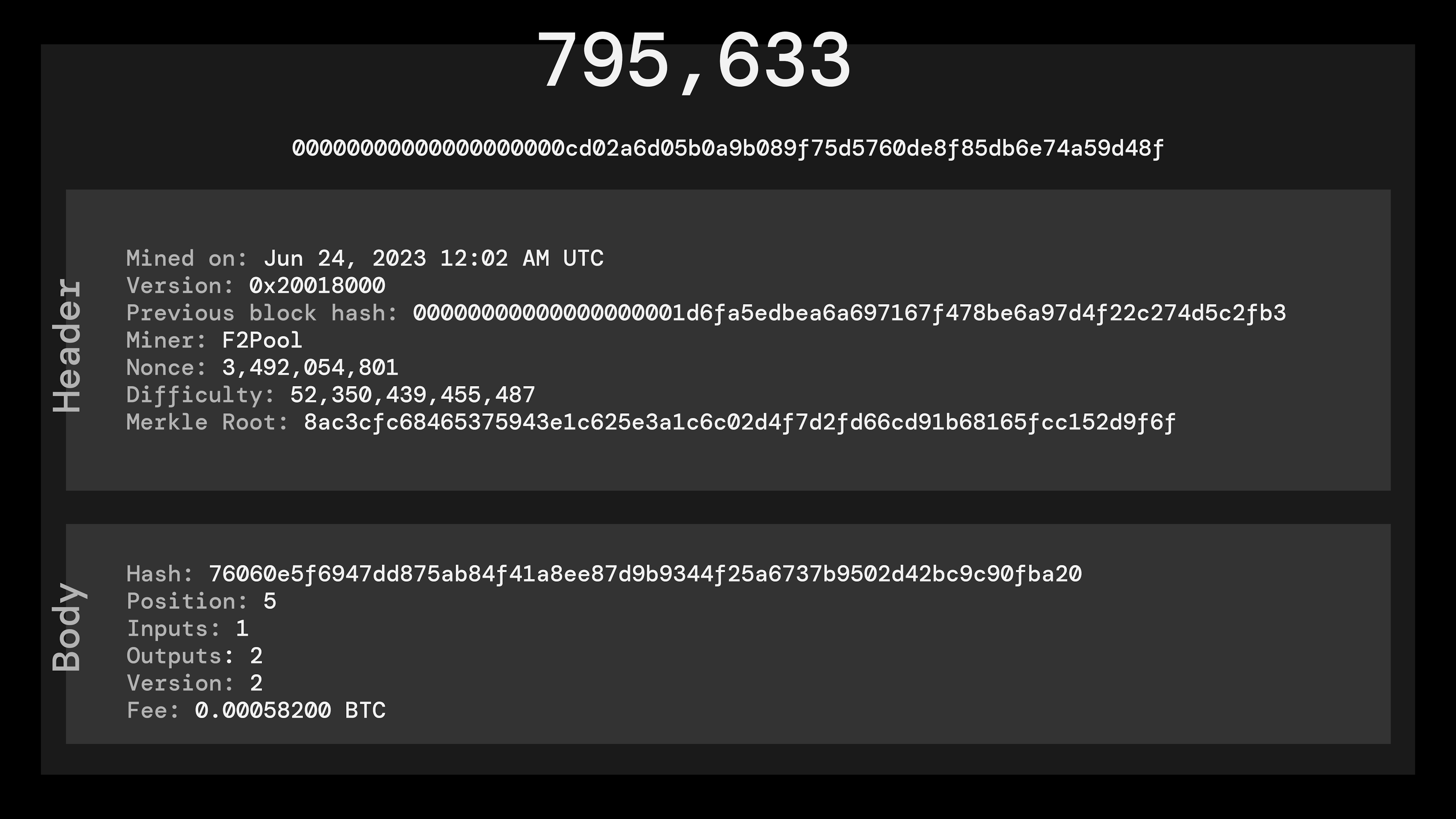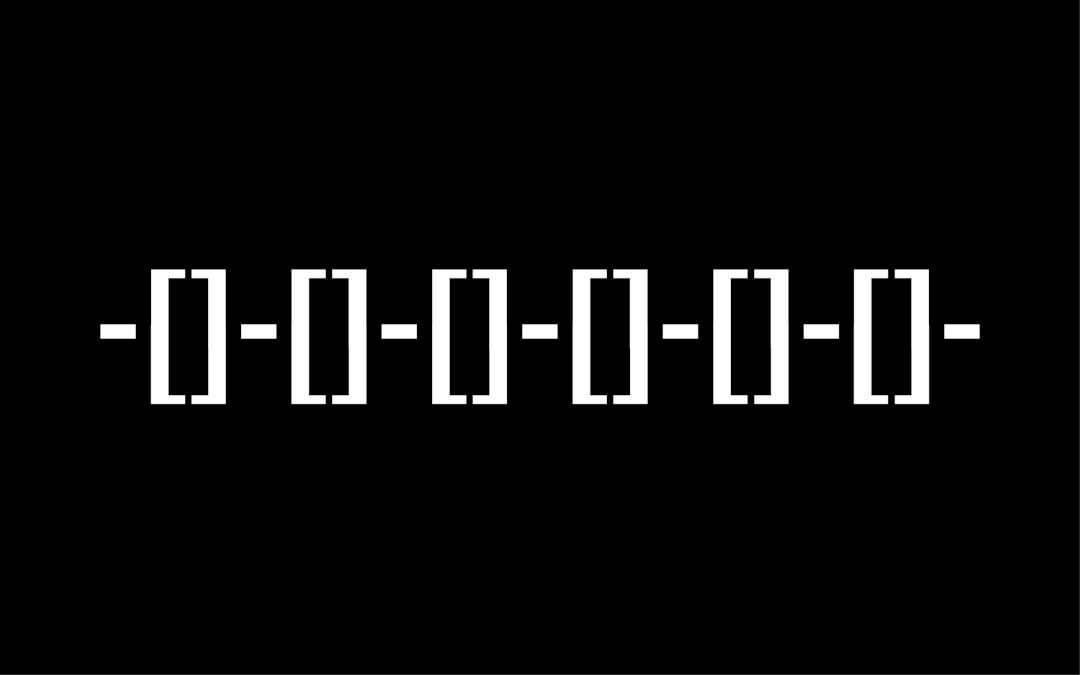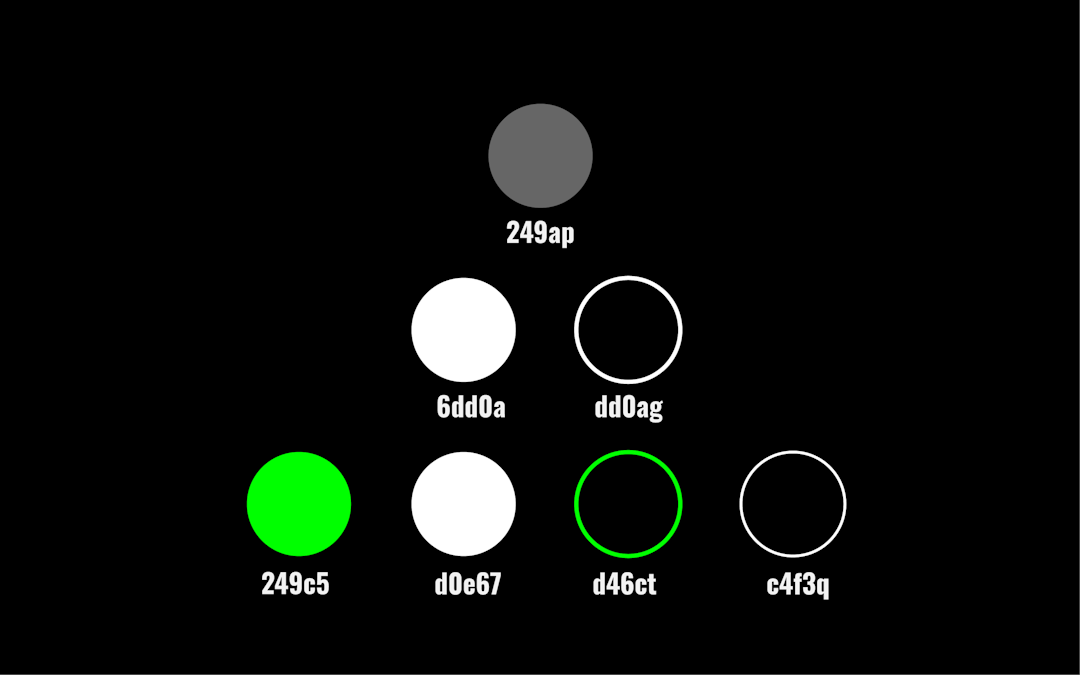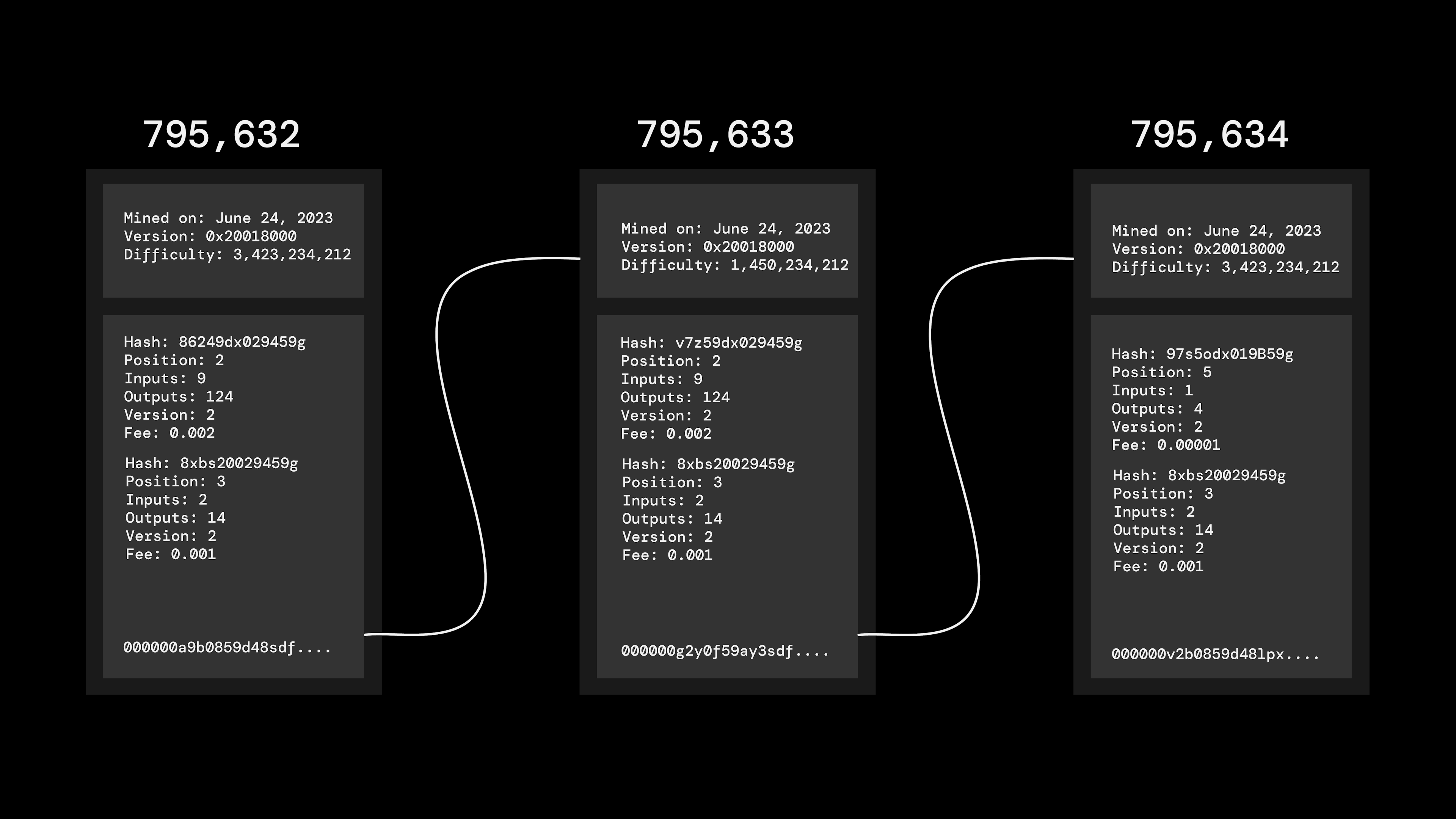Each block contains a block header and a block body.

Block #795,633
Block Header
The block header is an 80-byte segment at the beginning of each block. It contains essential information about the block, including: (We'll take block number 795,633 as our reference)
Version (4 bytes)
- A numerical value representing the block version. It indicates which set of block validation rules to follow.
- It is an unsigned integer that is encoded in little-endian format.
- For example, the version field of the block header for block number 795,633 is 536969216 in decimal, which is 0x20018000 in hexadecimal.
- The version field can be interpreted as a bit field, where each bit can be turned on or off to indicate support for a certain feature or protocol upgrade.
- For example, the first three bits of the version field are reserved for BIP9, a mechanism that allows miners to signal readiness for a soft fork. The fourth bit is reserved for BIP91, a proposal that activated SegWit by requiring miners to signal bit 1 on all blocks. The fifth bit is reserved for BIP141, which defines SegWit and its activation logic.
Previous Block Hash (32 bytes)
- The previous block hash is a SHA256(SHA256()) hash of the previous block's header. It links the block to its parent block, forming a chain of blocks.
- Why is there two times SHA256? There are two times SHA256 because it is a way to make the hash function more secure and resistant to certain types of attacks.
- Bitcoin uses double hashing with SHA256, which is denoted as SHA256(SHA256()). It does this for various reasons, such as making the proof-of-work algorithm more secure, ensuring the integrity of the transactions and blocks, and preventing length-extension attacks on the block headers.
- Previous Block Hash also affects the difficulty of finding a valid block solution. The difficulty target is adjusted every 2016 blocks (approximately two weeks) based on the timestamps of the previous blocks. The previous block hash determines which blocks are considered as previous blocks for this calculation.
- Previous Block Hash of 795,633:00000000000000000001d6fa5edbea6a697167f478be6a97d4f22c274d5c2fb3
Merkle Root (32 bytes)
The Merkle root is derived from the hashes of all transactions included in this block, ensuring that none of those transactions can be modified without modifying the header. I won't go in depth here because I already have published two detailed articles on it. I'll provide the link for your reference.
Merkle Tree: How Blockchain Ensures Data Integrity and Security
In a blockchain context, a Merkle tree is constructed for the transactions within a block. Let's take an example to illustrate this process. Consider a block containing four transactions:

Merkel Tree: What is it, and how does it work?
A Merkle Tree is a binary tree of hash values, where each leaf node represents a single piece of data or a hash of a piece of data. It is used to verify the integrity of large amounts of data efficiently. It was invented by Ralph Merkle in 1979 and is widely used in cryptocurrencies like Bitcoin and Ethereum.

Merkle root for (795,633): 8ac3cfc68465375943e1c625e3a1c6c02d4f7d2fd66cd91b68165fcc152d9f6f
Timestamp (4 bytes)
The timestamp of when the block was mined. Block 795,633 was mined on Jun 24, 2023 12:02 AM UTC.
Difficulty Target (4 bytes)
A value representing the mining difficulty level at which the block was mined. It was 52,350,439,455,487.47 for Block 785,633.
Nonce (4 bytes)
A random value that miners change in order to find a valid block hash. It was 3,492,054,801 for our Block in reference.
Block Body
The block body is the part of the block that has all the transactions. Transactions are the records of who sent and received bitcoins. In other words, transactions represent the movement of Bitcoins from one address to another. Each transaction contains the following elements:
- Transaction Hash ID: A unique identifier for the transaction, derived from hashing the transaction data.
- Inputs: The sources of Bitcoins for the transaction, specifying the transaction outputs from previous transactions that are being spent.
- Outputs: The destinations for the Bitcoins being sent in the transaction, specifying the amounts and the receiving addresses.
- Transaction Fees: The difference between the total value of the transaction inputs and the total value of the transaction outputs. It serves as an incentive for miners to include the transaction in a block.
Let's take an example from our reference block 795,633. You can view all the transactions present in this block by going to any bitcoin blockchain explorer and pasting the transaction hash. Let's take an example of a transaction with hash:76060e5f6947dd875ab84f41a8ee87d9b9344f25a6737b9502d42bc9c90fba20
- Hash ID:76060e5f6947dd875ab84f41a8ee87d9b9344f25a6737b9502d42bc9c90fba20
- Inputs: 1 (1Kr6QSydW9bFQG1mXiPNNu6WpJGmUa9i1g)
- Outputs: 2 (1AWYVZvfQvGGsaTNePKKWAxPQkWuC6ZvdY, 1Kr6QSydW9bFQG1mXiPNNu6WpJGmUa9i1g,)
- Transaction Fees: 0.00058200 BTC Here's a JSON
There are some additional information such as, the position, which gives us the information regarding the index of the transaction in the block.
The block body also has a special transaction that gives bitcoins to the miner who found the block. It is called the Coinbase transaction, which is the first transaction (position: 1) in the block. It has no inputs, but has one or more outputs, which specify the reward for the miner who found the block solution.
The miner gets some bitcoins as a reward for finding the block and some bitcoins as fees for including the transactions in the block. In case of our reference block, the transaction id for that special transaction is:a2acdd6473c049a7cf1ca38ce91e6cb0a9e6099a90e0749f2a183e320478fe6f
You can copy this transaction id and search it in any bitcoin explorer to get additional details.
How are Bitcoin Blocks Created?
Bitcoin blocks are created by miners, who are responsible for verifying transactions and adding them to the blockchain. Miners use powerful computers to solve complex mathematical problems, and the first miner to solve the problem and validate the transactions in a block is rewarded with newly created bitcoins. Once a block is created, it is broadcast to the network, and other nodes on the network validate the block before adding it to their own copy of the blockchain. I have written a detailed article on explaining how this works. Please refer to the following article.
The Quest for Digital Gold: Unraveling the Proof of Work Puzzle
Proof-of-Work (PoW) is a consensus algorithm vital in securing and validating transactions in blockchain networks.

Conclusion
In summary, Bitcoin blocks are a fundamental building block of the blockchain and are responsible for ensuring the security and immutability of the Bitcoin network. Without blocks, the blockchain would not exist, and the entire Bitcoin ecosystem would be compromised. Understanding how blocks work is essential for anyone looking to learn more about Bitcoin and the wider world of cryptocurrencies.
References:
- https://developer.bitcoin.org/devguide/block_chain.html
- https://crypto.stackexchange.com/questions/33929/can-two-files-strings-have-the-same-sha-256-value
- https://bitcoin.stackexchange.com/questions/56534/is-the-hash-of-the-previous-block-included-in-the-block-header
- https://www.blockchain.com/explorer
- https://bitcoin.org/en/version-history
- https://wiki.bitcoinsv.io/index.php/Block_header

